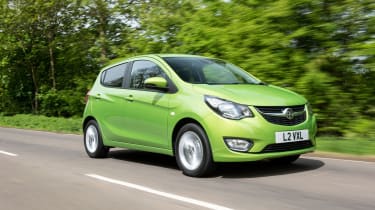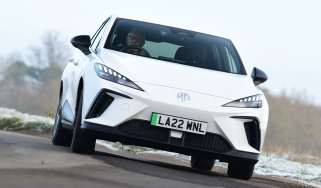Vauxhall Viva (2015-2019) review - MPG, CO2 and Running Costs
The Viva is almost as cheap to run as it is to buy, with a fuel-sipping engine and rock-bottom insurance

One of the most important reasons for buying a city car is that it’s inexpensive to buy and run. The Vauxhall Viva nails the former and it’s pretty good at the latter – but not the best in its class.
The 1.0-litre petrol engine has undertaken the most recent WLTP economy test, and it returns up to 46.3mpg. That's the same figure recorded for the Viva Rocks, and you should be able to easily match that in everyday driving.
If you want to find the most efficient Viva, then seek out SE cars with the ecoFLEX pack. Tweaked spoilers and low rolling-resistance tyres, plus the removal of the air-conditioning, means a return of 65.7mpg on the older NEDC cycle, up from 61.4mpg for the standard model.
It’s not as frugal as some eco-specials, however - the Dualjet version of the Suzuki Celerio manages an impressive 78.4mpg, for example. It’s a shame that Vauxhall didn’t choose to offer stop/start on the ecoFLEX, too, which would have made the savings more noticeable.
Insurance
The Viva starts at insurance group 3 – not as low as the Skoda Citigo but about average for the class. SL spec only raises that to group 4, too, so there will be little difference in cost.
Depreciation
Because city cars cost so little to buy, depreciation isn’t as big a concern as with more expensive models - there’s just a lot less cash to shed. It’s still something else to factor in when you look at running costs, though, and the Vauxhall Viva fares pretty well. It’s expected to retain between 39 and 42 per cent of its value after three years of ownership, which is on a par with the best in the class and better than the Toyota Aygo. That means even the cheapest version will be worth just over £3,500 after all that time.









